
| Lester B. Pearson [1897-1972] |

| Lester B. Pearson [1897-1972] |
"Lester Bowles (Mike) Pearson OM CC OBE PC PC [1897-1972] was a Canadian scholar, statesman, soldier & diplomat, who won the Nobel Peace Prize in 1957 for organizing the United Nations Emergency Force to resolve the Suez Canal Crisis. He was the 14th Prime Minister of Canada from 22 April 1963 to 20 April 1968, as the head of two back-to-back Liberal minority governments following elections in 1963 & 1965. /// During Pearson's time as Prime Minister, his Liberal minority governments introduced universal health care, student loans, the Canada Pension Plan, the Order of Canada, & the Maple Leaf flag. His Liberal government also unified Canada's armed forces. Pearson convened the Royal Commission on Bilingualism & Biculturalism, and he kept Canada out of the Vietnam War. In 1967, his government passed Bill C-168, which abolished de facto capital punishment in Canada by restricting it to a few capital offenses for which it was never used & which themselves were abolished in 1976. With these accomplishments, together with his groundbreaking work at the United Nations and in international diplomacy, Pearson is generally considered among the most influential Canadians of the 20th century & is ranked among the top six greatest Canadian Prime Ministers."
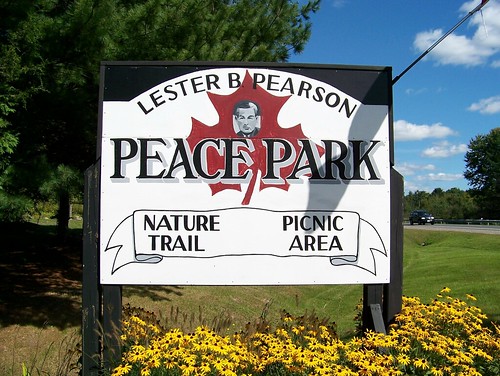


1967 - Lester B. Pearson Peace Park, 108087 Highway 7 (Trans Canada Highway), Tweed, Ontario (Canada). "The Centennial project of Roy Cadwell & Priscilla Cadwell who donated the land. It was part of the Madoc/Tweed Art Centre of which they were the owners & directors." /// "The site of war memorials, trails & flower gardens that a 5-member board headed by Jim Burns (613-478-2744) has been slowly restoring since 2002." Lester B. Pearson [1897-1972] was a Canadian professor, historian, civil servant, statesman, diplomat & politician, who won the Nobel Peace Prize in 1957 for organizing the UN Emergency Force to resolve the Suez Canal Crisis. Entry #1336 in the "Peace Movement Directory" by James Richard Bennett (2001).




1972 - Grave of Lester B. Pearson, MacLaren Cemetery, Wakefield, Quebec (Canada). Lester Bowles Pearson [1897-1972] was Prime Minister 1963-1968 & received the Nobel Peace Prize in 1957 for his role in defusing the Suez Crisis through the United Nations.
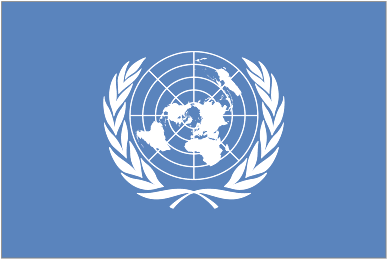



1974 - Lester B. Pearson United World College of the Pacific, Victoria, Vancouver Island, British Columbia (Canada). One of 16 United World Colleges (UWC) around the world. "A two-year pre-university school (Grade 12 & Gap Year) for up to 200 students from over 100 countries at the edge of the western world. We believe that education is a force to unite people, nations & cultures for peace & a sustainable future. Named in honour of the work done by the late Canadian Prime Minister & Canadaís only Nobel Peace Laureate, Lester B. Pearson. Prime Minister Pearson initiated the work to found a United World College 'of the Pacific' as a way of continuing the promotion of peace & understanding in the world."


1974-2014 - Pearson Collection, Laurier House, 335 Laurier Avenue East, Ottawa, Ontario (Canada). "In 1974, a surprising collection was unveiled on the third floor of Laurier House, the storied historical home of Sir Wilfrid Laurier & William Lyon Mackenzie King in Ottawa. It was a small shrine to Lester Bowles Pearson: a replica of the study in his home in Rockcliffe. With a humanity museums often miss, it captured Canadaís most celebrated diplomat & one of its great prime ministers. Tucked in the servantsí quarters of the dim, airless mansion, among Mackenzie Kingís death masks, Ouija boards & crystal balls, were the talismans of Pearsonís feverish life. There were bowls, plaques, trophies, cups, medals & ribbons, editorial cartoons, ceremonial keys, a baseball bat, signed photographs from world leaders, a hand-hooked carpet in the design of the flag of Canada. Here a visitor could see an unpretentious man & understand his life, intimately, as a student, soldier, professor, diplomat, parliamentarian, foreign minister & prime minister. /// No longer. In 2014, The Pearson Collection, as it is called, was packed up and returned to Library & Archives Canada, its owner. There was no announcement. The Pearson family was not told. Behold, the strange disappearance of Lester Pearson from Laurier House, where he had lived happily for 40 years. The reasons for his banishment remain unpersuasive. John Baird, the minster then responsible, has no memory of it, though removing Pearson is consistent with a disdain for the manís legacy that characterized Stephen Harperís Conservatives between 2006 & 2015..." /// Upper image is a photo of the 'Pearson Collection' that was once displayed in Laurier House.
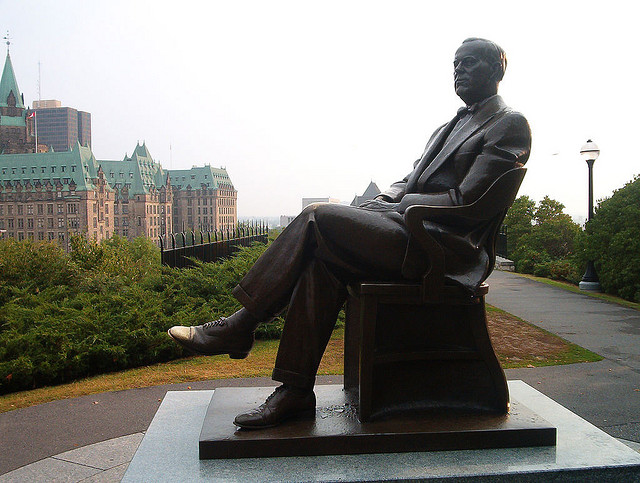

1989 - Statue of Lester B. Pearson, West Block, Parliament Hill, Ottawa, Ontario (Canada). Sculpted by Danek Mozdzenski. Lester Bowles Pearson [1897-1972] was Prime Minister 1963-1968 & received the Nobel Peace Prize in 1957 for his role in defusing the Suez Crisis through the United Nations.


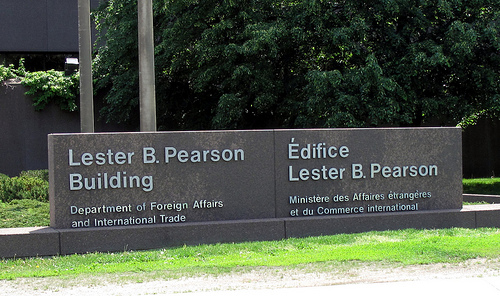

Date? - Lester B. Pearson Building / Edifice Lester B. Pearson, Department of Foreign Affirs & International Trade, Ottawa, Ontario (Canada).
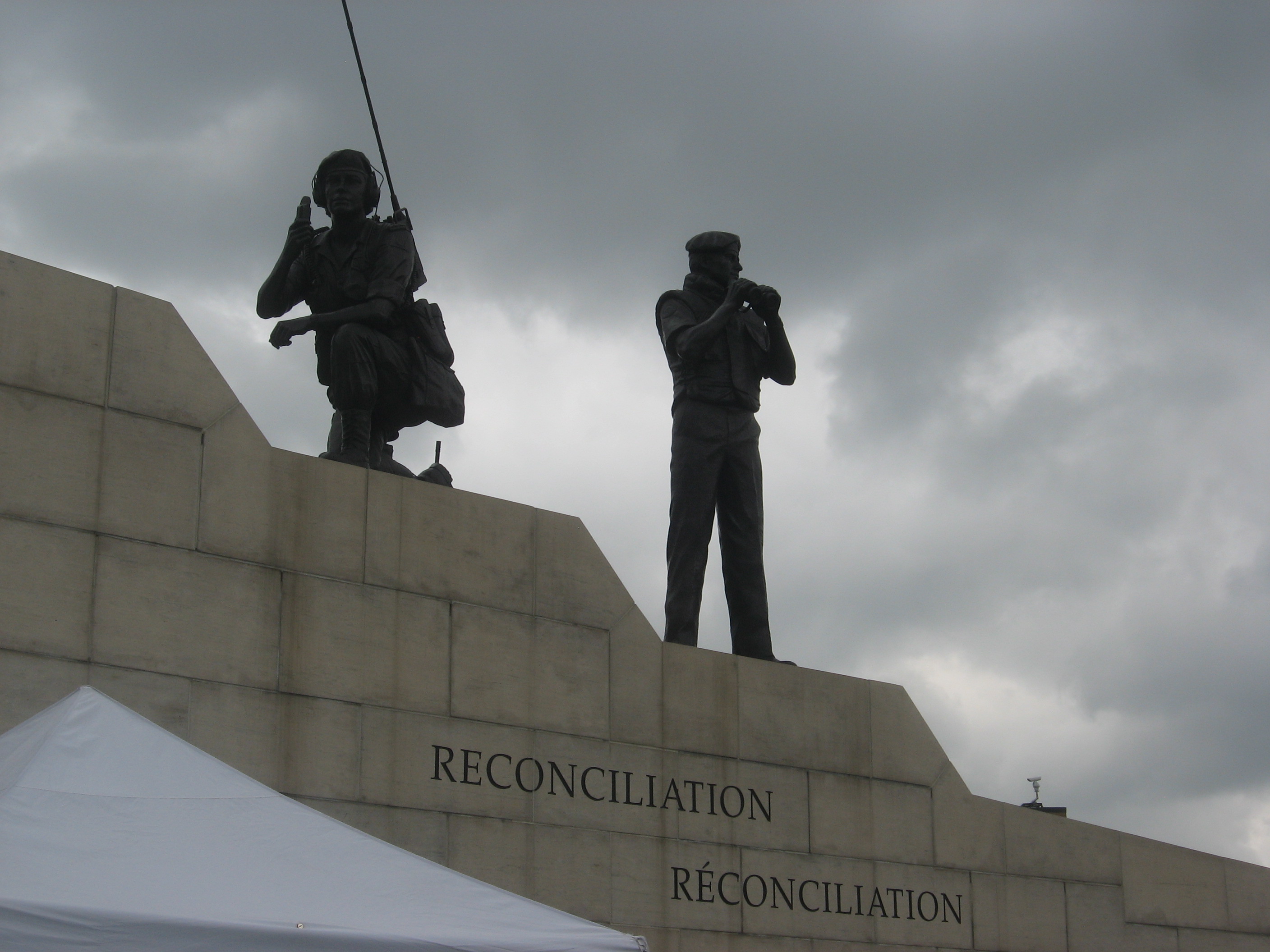
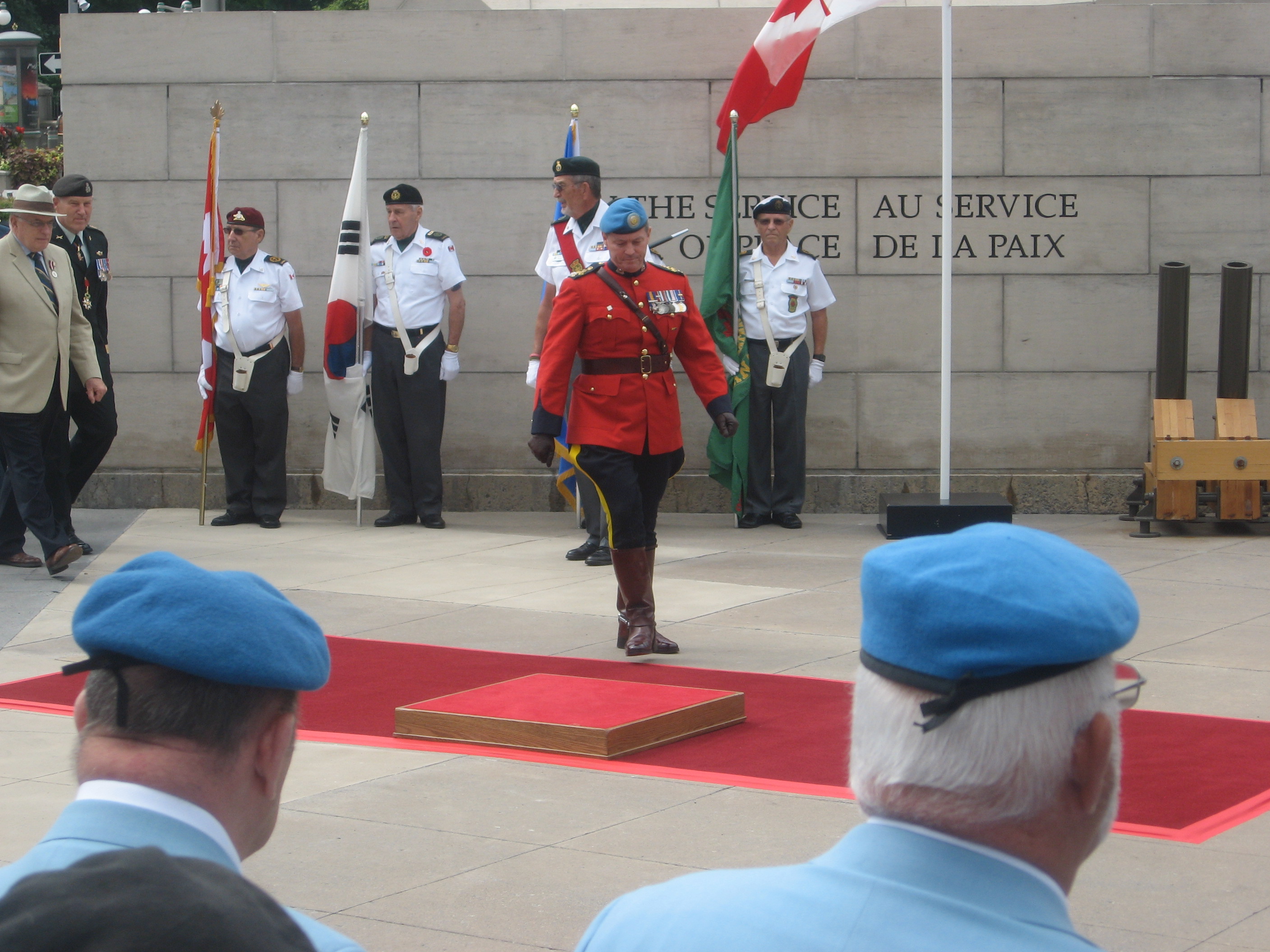


October 8, 1992 - Reconcilation (National Peacekeeping Monument), Ottawa, Ontario (Canada). Memorializes Canadian "casques bleus / blue caps" who served in UN peace-keeping missions in Korea (1947), Palestine (1948), Golan Heights, former Yugoslavia, and Somalia. Erected during 125th anniversary of Canadian Confederation (Canada 125). Base includes 1956 quote from Lester Pearson [1897-1972]: "We need action not only to end the fighting but to make the peace... My own government would be glad to recommend Canadian participation in such a United Nations force, a truly international peace and police force." /// Entry #1302 in the "Peace Movement Directory" by James Richard Bennett (2001). Click here for an analysis of this monument by Paul Gough. Both photos by EWL 12 August 2012.




2014 - Insuksuit, Terminal 1, Lester B. Pearson International Airport, Toronto, Ontario (Canada). Outside departures entrance. N.B.: Lester B. Pearson [1897-1972] received the Nobel Peace Prize in 1957. Terminal designed by Moshe Safdie (qv) who also designed the US Institute of Peace in Washington, DC (USA), & Holocaust Museum at Yad Vashem, Jerusalem (Israel).
Please email your comments & questions to geovisual at comcast.net. Thank you.